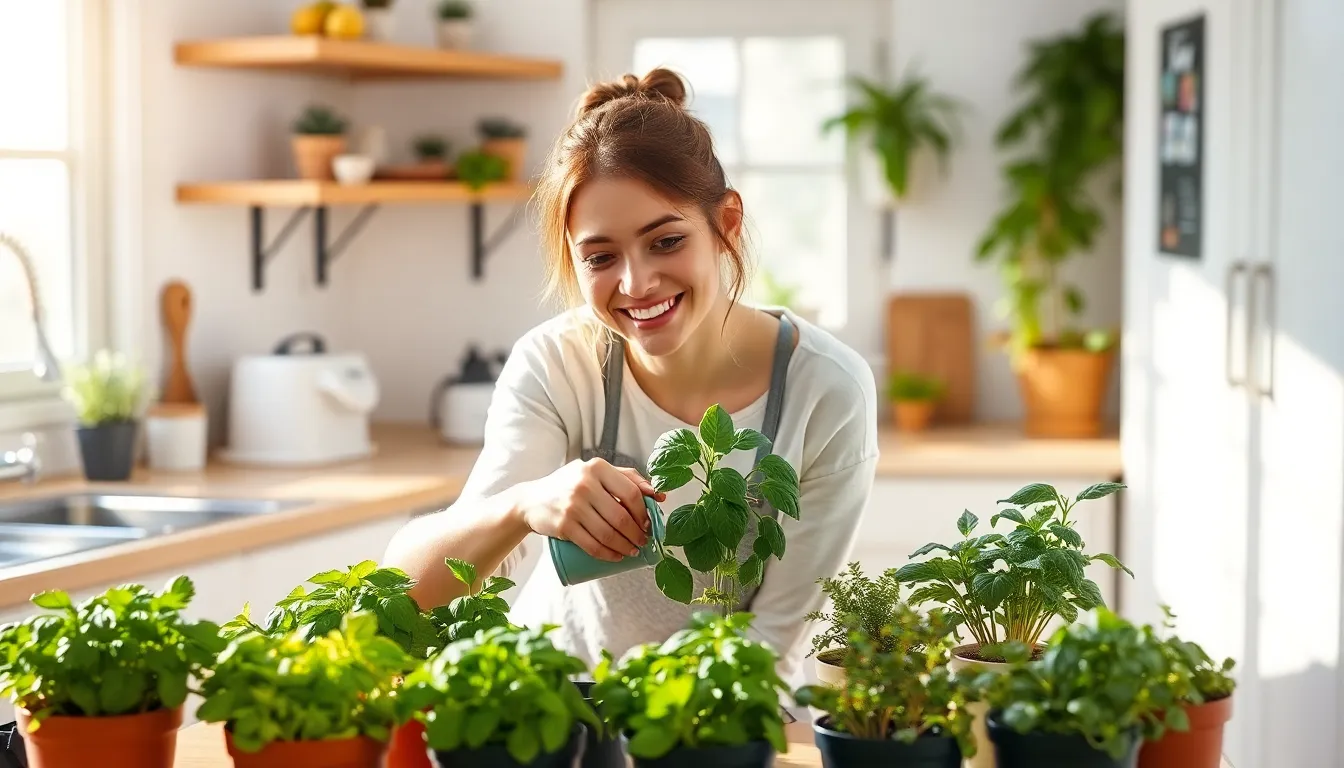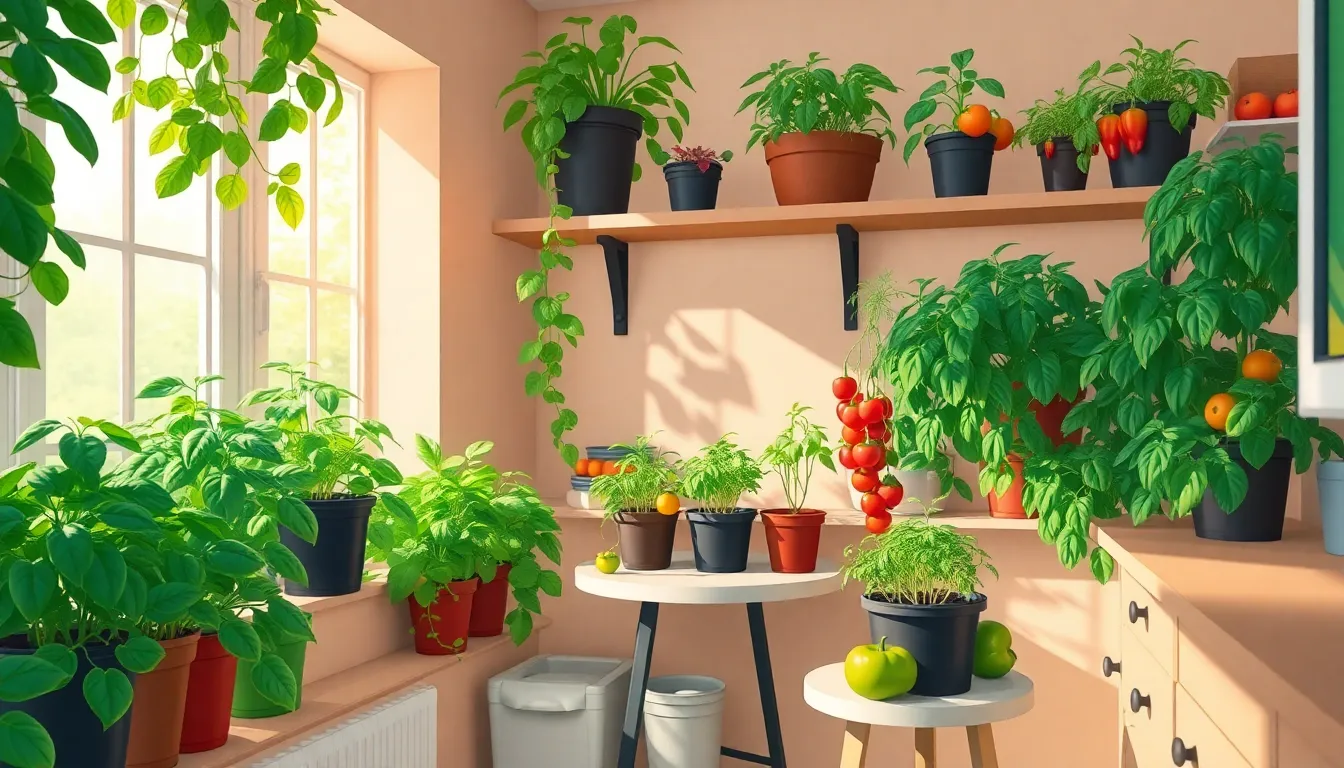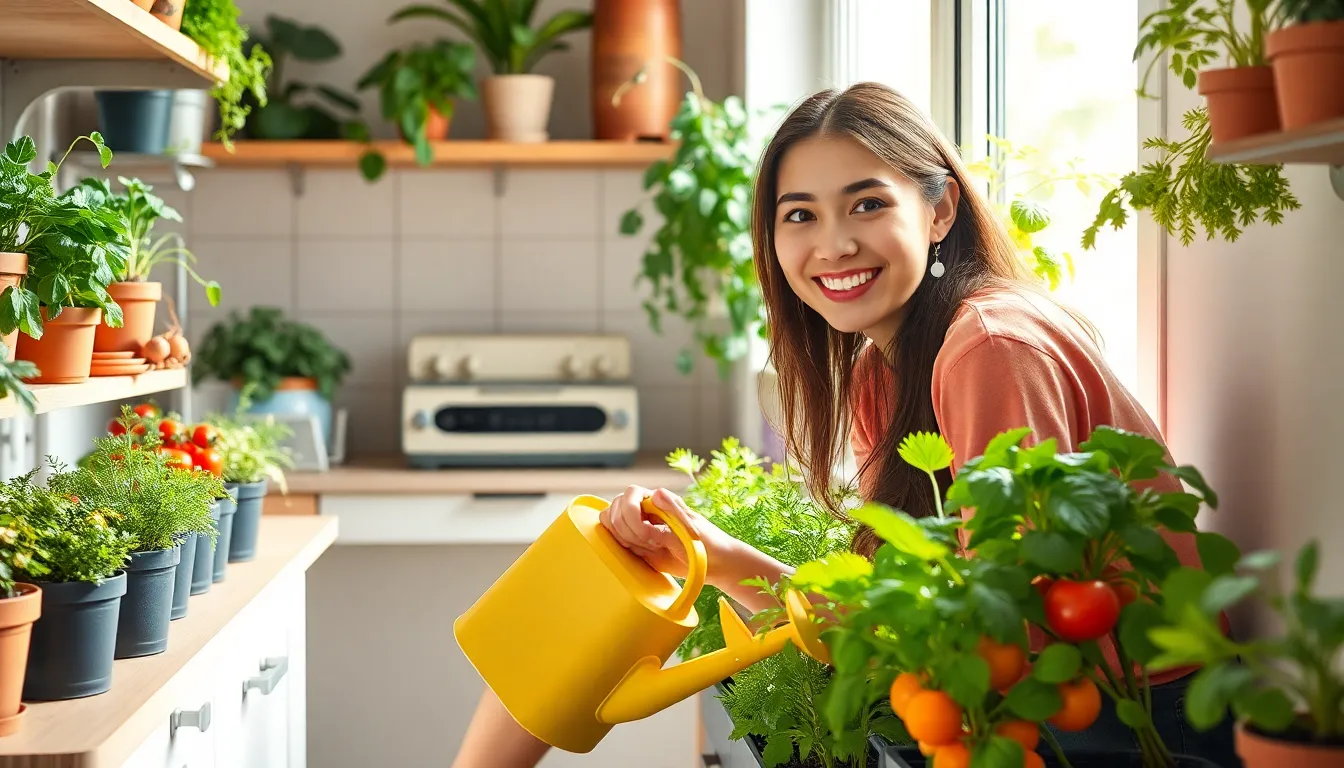Physical Address
304 North Cardinal St.
Dorchester Center, MA 02124
Physical Address
304 North Cardinal St.
Dorchester Center, MA 02124

Imagine plucking fresh tomatoes or crisp lettuce without stepping outside. Indoor vegetable gardening makes this dream a reality, turning any home into a mini farm. With just a bit of sunlight and some determination, anyone can cultivate their own greens right from the comfort of their kitchen.
Indoor vegetable gardening involves cultivating vegetables indoors, providing a sustainable way to grow fresh produce year-round. Individuals can grow varieties like tomatoes, lettuce, and herbs without relying entirely on outdoor conditions. Using containers or specialized grow systems accommodates small spaces such as kitchens and living rooms.
This gardening method uses limited sunlight, making it accessible for those lacking outdoor areas. It requires minimal resources like soil, seeds, and water, simplifying the process for beginners. Consider using grow lights to supplement natural light if space lacks windows.
Raised beds, pots, and vertical gardens serve as popular setups for indoor gardening. Each of these methods maximizes space and offers flexibility in design. Utilizing these techniques fosters creativity in gardening and allows personalization according to specific preferences.
The benefits extend beyond convenience. Indoor gardening helps improve air quality, brings psychological satisfaction, and encourages healthy eating habits. Active participation in growing food increases awareness of nutritional values and promotes sustainability.
Many indoor gardeners focus on organic practices, avoiding chemical fertilizers and pesticides. This approach ensures food safety and promotes environmental wellness. By cultivating vegetables indoors, individuals contribute to reducing food miles and fostering local produce consumption.
As indoor vegetable gardening gains popularity, more resources and tools become available to novice gardeners. High-quality soil, self-watering pots, and seed kits help simplify the initial setup. Embracing indoor gardening opens a new world of fresh options for anyone looking to enhance their culinary experience.


Indoor vegetable gardening provides numerous advantages, enhancing the overall gardening experience.
Limited space won’t hinder gardening enthusiasts. Indoor vegetable gardening utilizes containers, vertical setups, and raised beds to maximize available areas. Small apartments or cramped kitchens can accommodate thriving plants. Herbs like basil or vegetables such as peppers flourish even in minimal square footage. Grow lights and shelf systems further optimize space, allowing for layered planting without compromising on yield. This method suits urban dwellers who desire fresh produce without needing a backyard.
Year-round harvesting becomes achievable with indoor setups. Controlled environments enable consistent growth cycles, independent of seasonal changes. Home gardeners enjoy fresh tomatoes in winter, even if outdoor conditions are less than ideal. By choosing fast-growing species, such as radishes or lettuce, individuals can cultivate multiple harvests throughout the year. Utilizing efficient watering systems supports steady plant growth, promoting lush yields regardless of external climates.
Enhanced air quality results from maintaining indoor plants. Vegetables and herbs contribute to a healthier living environment by filtering toxins and producing oxygen. Studies show that houseplants can reduce indoor pollutants, promoting better respiratory health. Additionally, nurturing plants creates a calming atmosphere, which positively impacts mental well-being. Home gardeners engage in an enriching activity, fostering mindfulness alongside fresh produce cultivation.
Indoor vegetable gardening requires specific supplies to ensure successful growth of plants. Essential items include containers, soil mixes, fertilizers, and appropriate lighting solutions.
Containers and pots serve as the foundation for growing vegetables indoors. Choose pots with drainage holes to prevent water accumulation, which can damage roots. Containers come in various sizes and materials, including plastic, clay, and ceramic. Selecting containers that accommodate the mature size of the plants supports healthy growth. Additionally, consider using self-watering pots to simplify maintenance.
Soil and fertilizers play a crucial role in plant health. Use high-quality potting soil designed for indoor gardens, as it provides the necessary nutrients and drainage. Organic fertilizers enhance soil composition, encouraging robust growth without harmful chemicals. Regularly testing soil pH ensures an optimal environment for vegetable plants. Incorporating nutrient-rich amendments like compost can significantly boost growth potential.
Lighting solutions are vital for indoor gardening success. Many plants require at least 12 to 16 hours of light daily for healthy growth. LED grow lights offer energy efficiency and customizable light spectra suitable for different plant types. Position lights 12 to 24 inches above the plants to maximize photosynthesis. Making lighting adjustable accommodates the growth stages of plants, ensuring they receive adequate light throughout their development.
Indoor vegetable gardening includes a variety of vegetables that thrive in small spaces. Selecting the right plants can maximize yield and ensure a pleasant gardening experience.
Leafy greens are ideal for indoor gardening due to their fast growth and space efficiency. Varieties such as spinach, kale, and arugula flourish in containers and can tolerate lower light conditions. Regular harvesting encourages leaf production, allowing for continuous growth. These greens provide vital nutrients and can be utilized in numerous dishes. Growing them indoors simplifies access to fresh ingredients year-round.
Herbs exhibit a strong presence in indoor gardens, providing flavor and aroma. Popular choices include basil, parsley, and mint, which adapt well to indoor environments. Containers of various sizes accommodate these plants easily, enhancing culinary experiences. Regular pruning promotes bushier growth and encourages fuller flavor profiles. Additionally, fresh herbs dramatically elevate dishes, making them a staple in any indoor gardening setup.
Root vegetables also thrive in indoor environments, although some require additional space. Carrots, radishes, and beets can be cultivated in deep containers or pots. The compact growth habit of these vegetables suits limited spaces while ensuring high yields. Nutritional benefits from these root vegetables contribute to a balanced diet. Harvesting fresh produce directly from home adds satisfaction, making indoor gardening rewarding.
Indoor vegetable gardening thrives with the right techniques and management practices. Here are some essential tips.
Effective watering techniques ensure plant health in indoor gardens. Container plants require consistent moisture, but overwatering can lead to root rot. Use a moisture meter to determine when to water, aiming for the soil to feel slightly dry at the top. It’s beneficial to water in the morning to allow plants to absorb moisture throughout the day. Draining excess water from trays is crucial to prevent standing water, which can harm roots. Watering with room temperature water can also promote better absorption.
Pest management prevents infestations in indoor vegetable gardens. Regularly inspecting plants for signs of pests helps catch issues early. Natural insecticidal soaps and neem oil can provide effective treatments against common pests like aphids and spider mites. Maintaining good air circulation around plants discourages pest problems. Additionally, introducing beneficial insects, such as ladybugs, offers a natural solution. Keeping the growing area clean and removing dead leaves also reduces potential pest habitats.